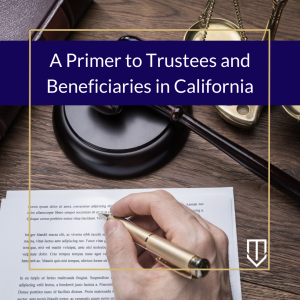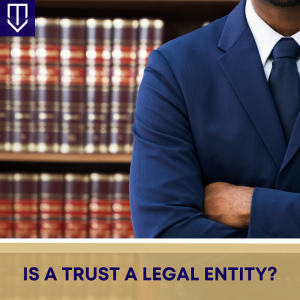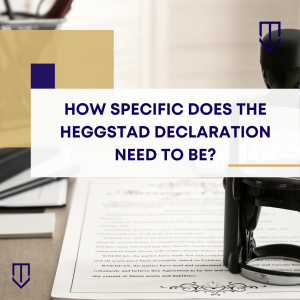 Trusts are an important way to set out one’s wishes for how and when you want to transfer assets like property. While trusts usually are set up as written contracts, other trusts can be enforced by the court, like resulting trusts and constructive trusts. These types of trusts are involuntary, meaning a court imposes them as a remedy to prevent an inequitable result, when property is wrongfully taken or transferred. (Kenneally v. Bank of Nova Scotia (2010) 711 F.Supp.2d 1174, 1190.) A resulting trust may arise where the transferor did not want the transferee to have a beneficial interest in the property. A constructive trust is used by the court to prevent unjust enrichment.
Trusts are an important way to set out one’s wishes for how and when you want to transfer assets like property. While trusts usually are set up as written contracts, other trusts can be enforced by the court, like resulting trusts and constructive trusts. These types of trusts are involuntary, meaning a court imposes them as a remedy to prevent an inequitable result, when property is wrongfully taken or transferred. (Kenneally v. Bank of Nova Scotia (2010) 711 F.Supp.2d 1174, 1190.) A resulting trust may arise where the transferor did not want the transferee to have a beneficial interest in the property. A constructive trust is used by the court to prevent unjust enrichment.
What are some similarities between resulting and constructive trusts?
Both resulting and constructive trusts are involuntary because they are imposed by the court to reach an equitable result. (In re Raymond Renaissance Theater, LLC (Bankr. C.D. Cal. 2018) 583 B.R. 735, 746.) Because they are imposed by the court and not preexisting or stemming from a contract, they are exempt from the Statute of Frauds. This means there is no writing requirement for the trust to be enforced. (Martin v. Kehl (1983) 145 Cal.App.3d 228, 238.) They both have a similar purpose in identifying and then enforcing beneficial rights in property for a third party. (Holder v. Williams (1959) 167 Cal.App.2d 313, 315-316.)
 California Partition Law Blog
California Partition Law Blog


 A trust is a legal device that is commonly used in estate planning. A trust represents “a collection of assets and liabilities” that can be held and transferred by an individual to another individual, the “beneficiary.” (Portico Mgmt. Grp., LLC v. Harrison (2011) 202 Cal.App.4th 464, 473.) When the trustee, the person responsible for managing and distributing the trust’s assets, has a personal interest in those assets, certain problems can arise. This is because the trustee is bound by several legal duties designed to safeguard the interests of the beneficiaries. Therefore, if a trustee is also a beneficiary, they must make sure that they do not unduly favor themselves at the expense of the other beneficiaries.
A trust is a legal device that is commonly used in estate planning. A trust represents “a collection of assets and liabilities” that can be held and transferred by an individual to another individual, the “beneficiary.” (Portico Mgmt. Grp., LLC v. Harrison (2011) 202 Cal.App.4th 464, 473.) When the trustee, the person responsible for managing and distributing the trust’s assets, has a personal interest in those assets, certain problems can arise. This is because the trustee is bound by several legal duties designed to safeguard the interests of the beneficiaries. Therefore, if a trustee is also a beneficiary, they must make sure that they do not unduly favor themselves at the expense of the other beneficiaries. A trust is a legal device often used in estate planning. A trust may be established in the trustor’s lifetime, or it may be established in the trustor’s will where it takes effect once the trustor dies and the will is admitted in probate. Generally, assets in a trust are distributed according to the trustor’s intent, which can be specified in the trust instrument or document.
A trust is a legal device often used in estate planning. A trust may be established in the trustor’s lifetime, or it may be established in the trustor’s will where it takes effect once the trustor dies and the will is admitted in probate. Generally, assets in a trust are distributed according to the trustor’s intent, which can be specified in the trust instrument or document. “A trust is any arrangement which exists whereby property is transferred with an intention that it be held and administered by the transferee for the benefit of another.” (
“A trust is any arrangement which exists whereby property is transferred with an intention that it be held and administered by the transferee for the benefit of another.” (
 Anytime a litigant wants to file a lawsuit, a threshold question is where the lawsuit should be filed. Specifically, the question is what county should get to hear the action. This process is called determining “venue,” and it can become quite a complicated endeavor. This is because the “correct” county for action will depend on a number of factors.
Anytime a litigant wants to file a lawsuit, a threshold question is where the lawsuit should be filed. Specifically, the question is what county should get to hear the action. This process is called determining “venue,” and it can become quite a complicated endeavor. This is because the “correct” county for action will depend on a number of factors.  When a loved one passes away, probate proceedings are hopefully not the first thing on their relatives’ minds. Probate is, however, an inevitability, even when a trust is present and effective. But inheritance is not always the blessing that the public conscious imagines it to be. The simple truth is that owning property in California is an expensive endeavor that carries with it tons of monetary responsibility. Faced with the possibility of inheriting something an individual simply cannot afford, there is an option: a disclaimer of interest.
When a loved one passes away, probate proceedings are hopefully not the first thing on their relatives’ minds. Probate is, however, an inevitability, even when a trust is present and effective. But inheritance is not always the blessing that the public conscious imagines it to be. The simple truth is that owning property in California is an expensive endeavor that carries with it tons of monetary responsibility. Faced with the possibility of inheriting something an individual simply cannot afford, there is an option: a disclaimer of interest.  A Heggstad petition is a unique legal maneuver in probate court that a party can use to establish the existence of a trust. Normally, if a party wants to show that the property at issue is in a family trust, they have to produce evidence of a transfer of the property into the trust. (Prob. Code § 15200 (b).) This is usually accomplished with a deed, which conveys the property from the owners (the “settlors”) to the trustees of the trust.
A Heggstad petition is a unique legal maneuver in probate court that a party can use to establish the existence of a trust. Normally, if a party wants to show that the property at issue is in a family trust, they have to produce evidence of a transfer of the property into the trust. (Prob. Code § 15200 (b).) This is usually accomplished with a deed, which conveys the property from the owners (the “settlors”) to the trustees of the trust.